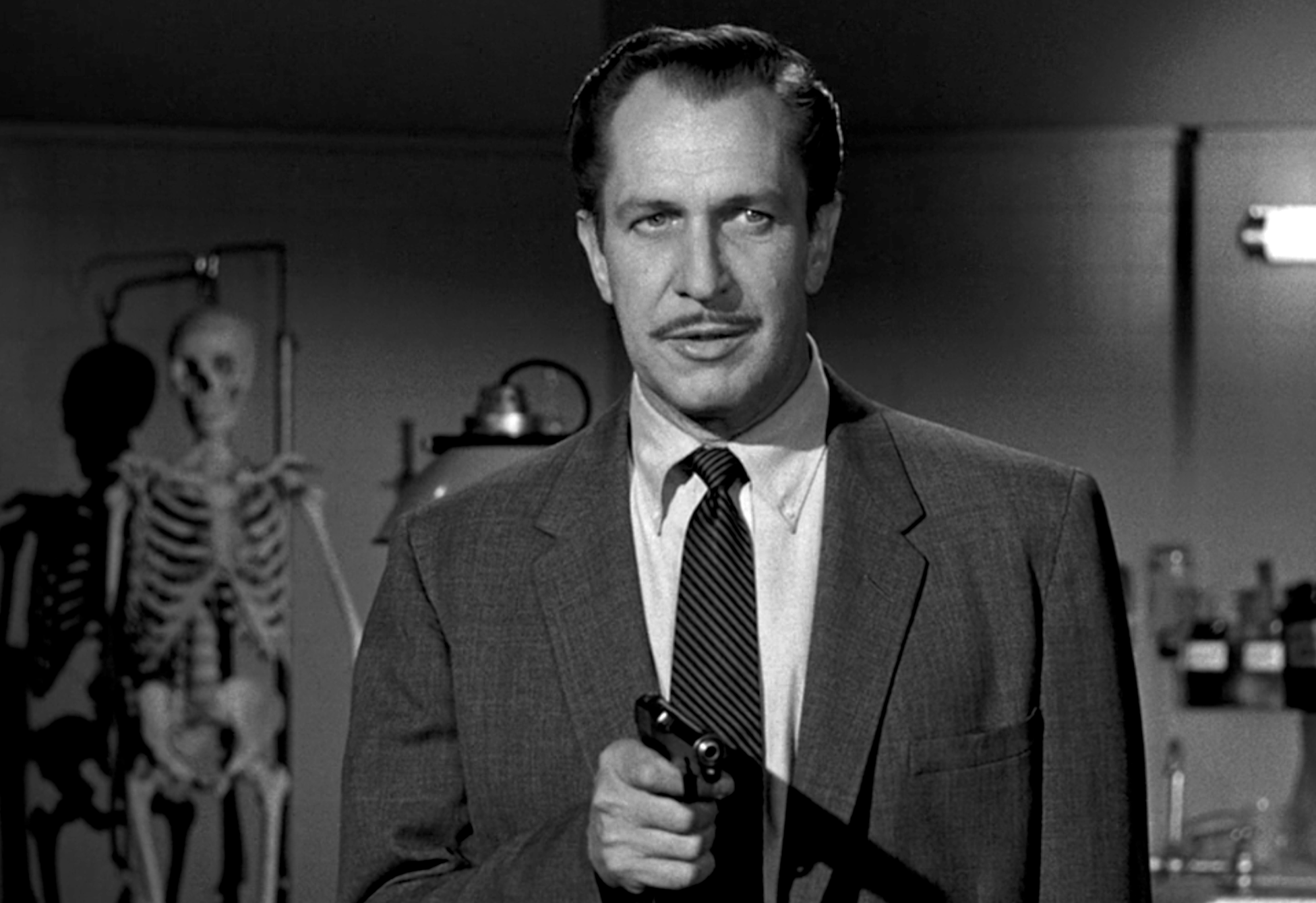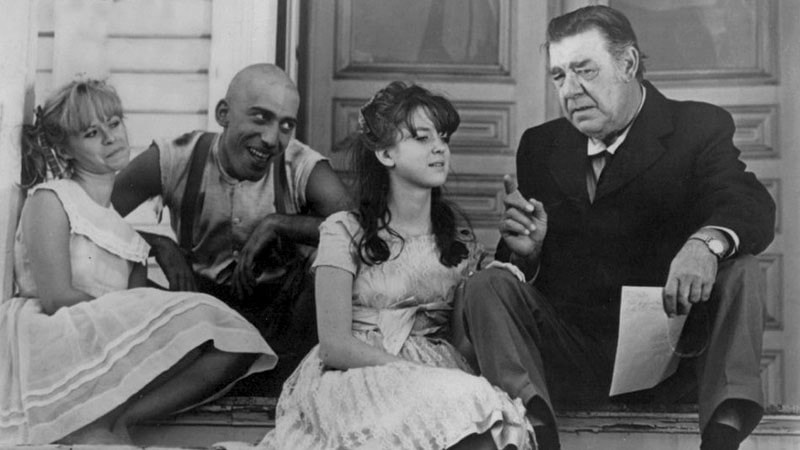
Bahman Farmanara’s early Film Tall Shadows of the Wind was released in 1979, one year after the Iranian revolution. It was based on a short story by Houshang Golshiri. The film was banned by the Shah before the 1978 revolution, and then banned again by Mohammed Reza Pahlavi, after the revolution. It has no overt references to anything political, but it is a potent allegory about power, faith, fear, and subjugation.
Tall Shadows of the Wind presents us with a strange world that is difficult to describe. Surreal would not be accurate, it’s more of an alienated and empty world where reality is fuzzy around the edges. It might be closer to magic realist, but in a menacing and dark way that is not common in magic realist stories. We are watching people who live far off in a desert with nothing but each other to rely on. Their isolation leaves them without an outside world to keep them grounded.
The heart of Tall Shadows of the Wind is a rumination on belief. We, as humans, have a tendency to quickly and easily adopt irrational ideas. Our psyches were shaped by natural selection, which is guided by quick and simple results. Imagine two early humans sitting somewhere on an African savanna. One hears a rustling in the bushes and gets up to run. The other explains that just because the bushes made a noise doesn’t mean they are necessarily in danger, it could just be a mouse. The one who has jumped to conclusions without proper evidence gets up and runs away, but the one waiting for further information to properly confirm his hypothesis is torn to pieces when a lion jumps out of the bushes. The human who jumped to conclusions without fully considering the facts escapes and lives to pass down his genes. It is not quite as simple as all this, but as a result of dynamics like this, humans are more emotional than rational, which paves the way for superstition, religion, and other unfounded beliefs. Evolution is not concerned with end goals or outcomes, only with what works in the short run.
Our predisposition to jump to unfounded conclusions and ignore facts leaves us all vulnerable to manipulation. This is what Tall Shadows of the Wind is about. This is why it was banned both before and after the revolution. Whether those in power are put there by a democratic process or a military coup, their status is affected by what the populace believes.
The plot centers around a scarecrow that is erected in a field near a small town. The story’s protagonist, Abdullah, happens upon it and, in a moment of esprit, uses a piece of charcoal to draw a face on the white rags that have been bunched together to form its head. The playful gesture seems to unintentionally trigger a string of mysterious and frightening events. Some villagers are suddenly frightened by the scarecrow. Either they scream when they see it, or imagine that they see it in places where it is not. Others say they can hear the scarecrow hopping around on its wooden post in the night.

A scarecrow is a perfect means to examine the intertwined layers of fear and power. A scarecrow is a sham. It’s an illusion meant to fool birds into believing that a human is present. The scarecrow has no actual power. It is a harmless inanimate object. Its power is in its ability to fool a victim into thinking it has power. Its efficacy, its purpose is directly proportional to its ability to make its victims believe in it.
The fear of the empty, meaningless scarecrow is a metaphor not only for political power, but religious power as well. At the beginning of the film, there is a sequence where we see villagers worshipping the scarecrow. We hear the crowd chanting a plaintiff prayer over and over.
May he come to help us
May he come to solve our riddle
May he come to care for us
May he come to comfort us
May he come to tie our knots
May he come for our victory
May he come for our happiness
May he come for our justice
It forms a loud, menacingly fervent chorus. Humans have needs. They have a natural inclination to feel incomplete, dissatisfied, and restless. They pray for their problems to be solved and for happiness and comfort. The more elusive these things are, the more apt humans are to imagine a way to attain them. Our need for meaning, happiness, and satisfaction makes us vulnerable. This prayer is a litany of weaknesses that lead us astray and cause us to irrationally invest our hopes in random superstition.
As the fear of the scarecrow begins to take hold of the villagers, a woman seeks the council of the village elder. She is worried the villagers are being led astray. The elder shrugs his shoulders and says, “What can I do? I am the master of the village, not the master of people’s fears.” It is the scarecrow that is the master of people’s fears, which in turn means it is more powerful than the village master.
Where there is fear, there is almost always hope. In many ways, Tall Shadows of the Wind is as much about how people are controlled by hope as they are by fear. It is reminiscent of Piotr Szulkin’s O-Bi O-Ba The End Of Civilization. Manipulating people’s hopes is a risky game where the power of their faith can quickly outstrip your ability to control it. These villagers fear their new scarecrow god, and so look to him for salvation. The scarecrow frightens them, and so they look to it in hopes of gaining its favor, and perhaps sharing in its power. It's a bit like Stockholm Syndrome.

I remember teaching at a school in an impoverished neighborhood where my students couldn't distinguish between the words "fear" and "respect." I spent almost half a class period trying to help them differentiate the two, but they saw no distinction. For them, there was no other way to get respect. Respect for them was power, and power was taken by force or threat of force. There was an implicit assumption that there was no other reason to respect someone. This worldview stems from a lack of trust in general. Everyone is suspect, no one can be trusted to have your best interest at heart. It is a world without altruism, sympathy, or compassion. It creates a hierarchy of fear, where the baseline is a fear of everyone, which then calibrates your position of influence to how much fear you can inspire.
Tall Shadows of the Wind takes place in a nameless, desolate, almost colorless landscape where everything feels distant and strange. Without a specific context, the story feels more like a parable. It looks a bit like a Pasolini film, where everything is biblical and apocalyptic.
Not all of the scenes stitch neatly together. There are parts that seem like a dream, or perhaps a momentary detour. Some parts seem to fit into a chronology, but others just seem to float outside the narrative. Watching the film, one gets the feeling they're not entirely in the loop. We are observers who cannot fully understand what we are seeing, but that is also reflected in the characters who also seemed mystified. Certainly, confusion and miscommunication are essential ingredients in maintaining fear-based power. Reliable sources would unite people with information that people could use to challenge dictatorial power. Confusion keeps the populace divided, and therefore ineffective.

If the populace in the fairytale of The Emperor’s New Clothes could communicate effectively, the illusion would be dispelled. It isn’t even an illusion. No one is fooled, they simply are too afraid to relay what they honestly see with their own eyes. So too, the scarecrow. Neither the king nor the scarecrow has even asked for people to follow their lead, the populace does it willingly, hoping it will keep them in the fold. Foucault talks about the lateral nature of power, where hegemony is not forced downward from above, but exerted laterally by our desire to conform to the group. We are misled, not by the powers that be, but by our own desire to belong.
Tall Shadows of the Wind stays just vague enough to open a versatile arena of possible meanings. It is a potent and imaginative criticism of power that speaks both to leaders and followers. It is a nuanced exploration of how a state garners and maintains power. There is a primal set of desires and beliefs that are ignited and then harnessed, not simply by the will of one individual, but by a confluence of an entire society.

If you enjoyed this article you might also enjoy this -https://filmofileshideout.com/archives/samira-makhmalbafs-the-two-legged-horse/



